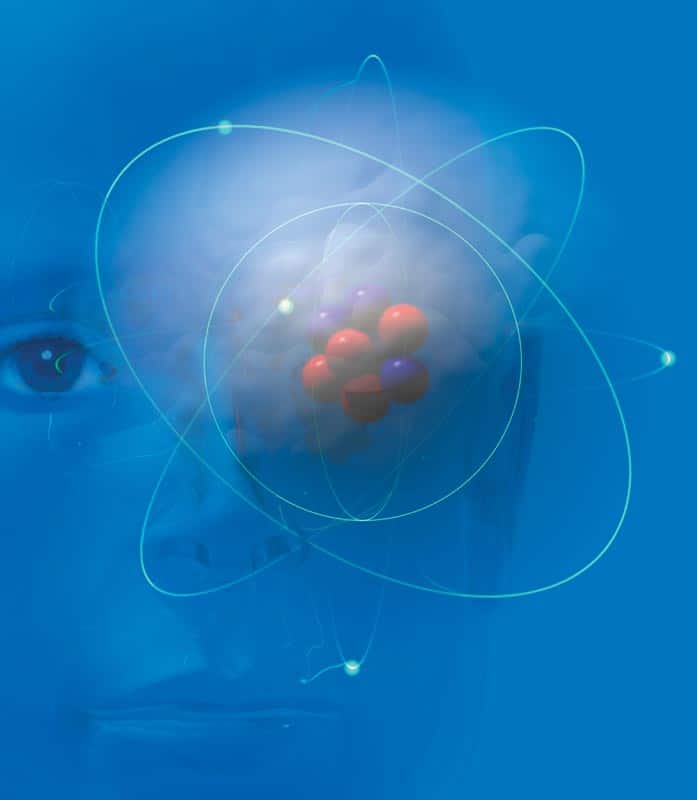The concept of forming a critical mass of experts—akin to the threshold in nuclear physics where fission becomes self-sustaining—serves as a fascinating metaphor in understanding thought leadership within any discipline. In essence, just as a reactor requires a sufficient number of fissile atoms to sustain a reaction, fields of intellectual endeavor necessitate a confluence of knowledgeable individuals whose interactions foster innovation and advancement. This article delves into the intricacies of thought leadership through the lens of this thought-provoking metaphor, elucidating how expertise coalesces into a transformative force.
In the realm of physics, the “critical mass” denotes the minimum amount of fissile material needed to maintain a nuclear chain reaction. Similarly, the intellectual ecosystem flourishes when ideas propagate through collaborative discourse among experts. This synergistic relationship breeds creativity; hence, thought leadership thrives not merely on individual brilliance, but rather on a constellation of insights. Each expert contributes a unique perspective, akin to the varied energy states of particles within an atomic nucleus, setting the stage for robust discussions and groundbreaking paradigms.
At the foundation of thought leadership is the domain of expertise. This encompasses not only academic knowledge but also practical experience in various contexts. Experts often emerge as thought leaders because of their capacity to synthesize information and offer solutions or insights that resonate with their peers. This phenomenon can be likened to critical nuclei in nuclear fission; just as they interact with neutrons and release energy, experts engage in dialogues that yield fruitful innovations. Thus, the role of collaboration cannot be overstated; it is the harmonization of diverse skill sets and cognitive frameworks that lays the groundwork for pioneering ideas.
The emergence of digital platforms has revolutionized the way experts connect and share knowledge. In previous decades, thought leadership was often constrained by geographical and institutional barriers. However, the advent of the internet has created a global stage for intellectual exchange, resembling the vastness of a reactor chamber filled with particles in motion. The fluidity of online communication allows for instantaneous collaboration and ideation, enabling a diverse assembly of voices to resonate. As these voices intermingle, they can collectively endorse or challenge prevailing notions, further enhancing the dynamism of thought leadership.
While the gathering of experts engenders potential for forward-thinking ideas, it can also precipitate conceptual inertia if not managed judiciously. Indeed, there exists a paradox in the endeavor to form a critical mass; as a group swells with knowledge, the risk of groupthink escalates. Just as overwhelming density in a nuclear reactor can lead to uncontrolled reactions, an oversized assemble of thinkers may stifle dissent and inhibit innovation. It is mechanisms of intellectual rigor and open discourse that facilitate healthy friction among ideas, ensuring that diversity of thought prevails. The challenge lies in cultivating an environment where dissenting opinions are not merely tolerated but celebrated.
The metaphor of critical mass serves to illuminate yet another essential aspect of thought leadership: mentorship. Much like the initiation of a nuclear reaction requires an initial input of energy—a neutron that triggers the fission—the dissemination of knowledge hinges on the guidance and support of seasoned experts. Mentorship is vital; the wisdom of experienced scholars can inspire emerging leaders, instilling in them the confidence necessary to contribute meaningfully to their fields. This mentorship acts as a catalyst, igniting potential in nascent thinkers who may one day evolve into thought leaders themselves.
The ecology of thought leadership is profoundly influenced by the principle of reciprocity. Experts in any domain are not isolated entities; they are part of a larger network of intellectual exchange. When one expert contributes valuable insights, it often incites others to engage, amplifying the spectrum of discourse. This interconnectedness mirrors the interactivity of particles within a critical mass—each action reverberates throughout the system, fostering an environment ripe for continual growth and evolution. In essence, thought leadership is a collaborative tapestry woven from the diverse threads of varied expertise.
In light of these dynamics, it is imperative to evaluate the impact of thought leadership on society. Thought leaders have the capacity to influence public policy, drive technological advancement, and pave new avenues for interdisciplinary collaboration. The collective advancement of knowledge propels society forward, much like the energy released from a controlled nuclear reaction. The dialogue initiated by experts can lead to pragmatic solutions for pressing global challenges—climate change, public health, and education reform, to name a few—underscoring the expansive potential inherent in a confluence of expert thought.
As we navigate the complexities of a rapidly evolving world, the necessity for forming a critical mass of experts becomes increasingly clear. The interplay of diverse viewpoints not only enriches discussions but also safeguards against the pitfalls of intellectual isolationism. Embracing this critical mass ushers in a new era of thought leadership wherein innovation is celebrated, dissent is constructive, and mentorship is prioritized. In this dynamic landscape, the world may indeed witness an exponential increase in creativity and transformative solutions—echoing the powerful repercussions of a sustained nuclear chain reaction.
In conclusion, the metaphor of critical mass extends beyond its scientific origins and provides profound insight into the mechanics of thought leadership. The fusion of expertise, collaboration, and mentor-mentee dynamics constitutes a robust framework, essential for fostering a thriving intellectual milieu. As experts coalesce, it is crucial to ensure that the interactions remain invigorating, fostering an environment where innovative thought can flourish, thus making lasting impacts on both academia and society at large.












